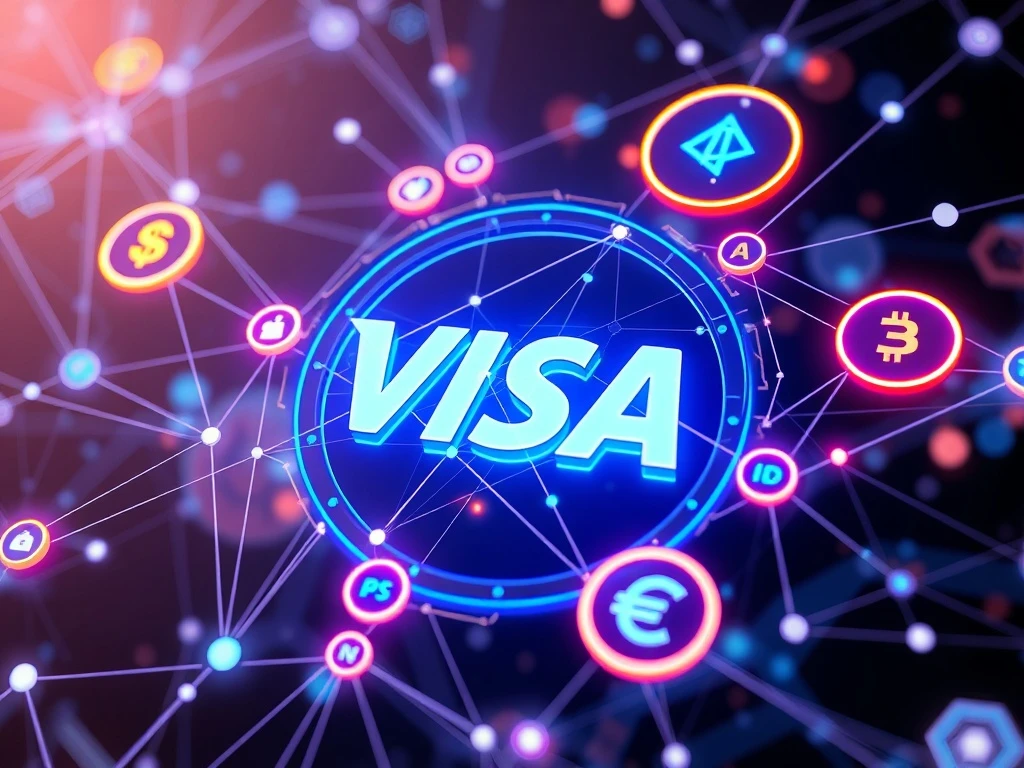Visa Expands Stablecoin Support to 4 Coins and Adds Avalanche & Stellar for Lightning-Fast Transactions

In a groundbreaking move, Visa is turbocharging its digital payment infrastructure by expanding stablecoin support to four major coins and integrating two high-speed blockchains—Avalanche and Stellar. This strategic upgrade promises to revolutionize cross-border transactions with unmatched speed and efficiency. Here’s what you need to know.
Why Visa’s Stablecoin Support Expansion Matters
Visa’s latest update adds three new stablecoins—PayPal USD (PYUSD), USDG, and EURC—to its settlement platform, alongside Ethereum and Solana. The inclusion of EURC, a euro-backed stablecoin by Circle, marks a pivotal shift toward multi-currency settlements. Key benefits include:
– Greater liquidity: Partners gain access to diversified reserve-backed stablecoins.
– Lower costs: Avalanche and Stellar blockchains reduce transaction fees.
– Global reach: Supports settlements in 25+ fiat currencies.
Avalanche and Stellar: The Blockchain Powerhouses Behind Visa’s Upgrade
By integrating Avalanche and Stellar, Visa taps into:
– High throughput: Avalanche processes 4,500+ transactions per second.
– Near-instant settlements: Stellar’s network confirms transactions in 3-5 seconds.
– Interoperability: Seamless cross-chain compatibility for partners.
How PYUSD and EURC Stablecoins Enhance Visa’s Platform
The addition of PayPal’s PYUSD and Circle’s EURC brings:
– Dollar and euro stability: Reduces volatility for international transactions.
– Regulatory compliance: Partnering with Paxos ensures transparency.
– Mainstream adoption: Bridges crypto and traditional finance.
What This Means for Global Payments
Visa’s Rubail Birwadker highlights the “multi-coin, multi-chain foundation” as a game-changer for financial institutions. Expect:
– Faster settlements for merchants and banks.
– Reduced friction in cross-border remittances.
– Increased demand for stablecoin-integrated services.
Conclusion: Visa’s Bold Step Toward a Crypto-Powered Future
Visa’s expansion into stablecoins and high-performance blockchains signals a seismic shift in global payments. By embracing PYUSD, EURC, Avalanche, and Stellar, the company is future-proofing its infrastructure—and accelerating crypto’s march into mainstream finance.
FAQs
1. Which stablecoins does Visa now support?
Visa supports four stablecoins: PayPal USD (PYUSD), USDG, EURC, and its previously integrated stablecoin on Ethereum and Solana.
2. Why did Visa choose Avalanche and Stellar?
Both blockchains offer high speed, low costs, and scalability—critical for global payment networks.
3. Is EURC the first euro-backed stablecoin on Visa’s platform?
Yes, EURC marks Visa’s first euro-denominated stablecoin integration.
4. How does this affect cross-border transactions?
Faster settlements, lower fees, and multi-currency support streamline international payments.
5. Will Visa support more blockchains in the future?
Likely. Visa aims to build a “multi-chain foundation” to adapt to evolving tech.
6. Who benefits most from this update?
Financial institutions, merchants, and consumers relying on efficient, low-cost global transactions.









